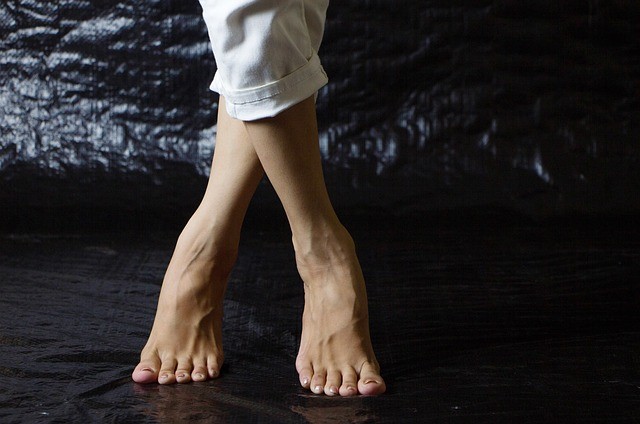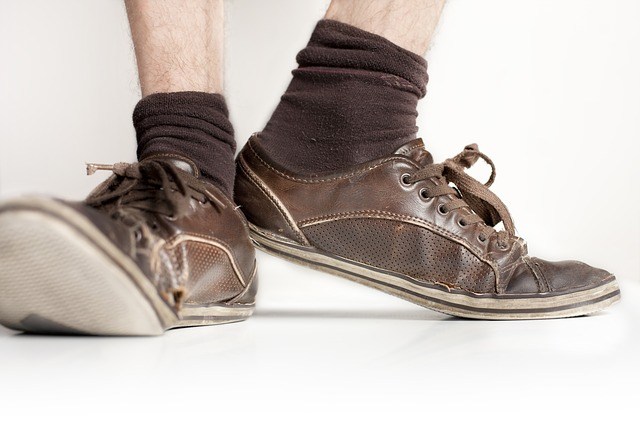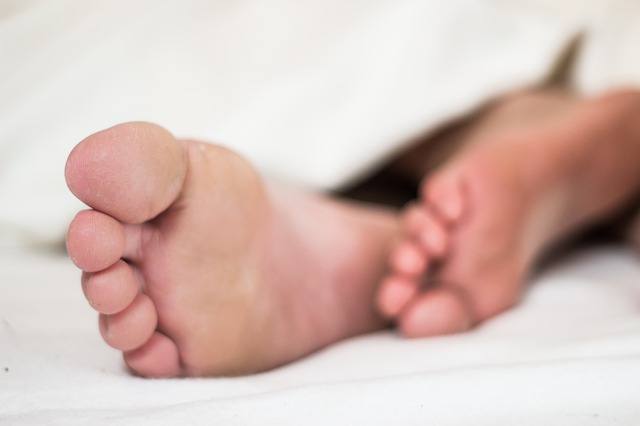Bone spurs can be difficult to identify – not because they resemble any other kind of foot ailment, but because they can often be small and easily dismissed as a misunderstood abnormality of the skin or foot.
Bone spurs, or osteophytes, are, in fact, non-extrusive projections that can appear anywhere on the foot.

Contents
Identifying a Bone Spur
These projections typically appear in between the joints of the foot, but they can also appear on the heel and on the tips of the toes.
These bone spurs tend to appear while the foot is healing from some previous trauma. The foot will try to regrow bone in order to mend whatever was previously broken.
When that growth exceeds the size or necessity of the foot, the protrusion arises. Bone spurs do not normally break the skin of the foot, but the skin above the growth will grow coarse and painful to touch.
Bone spurs that appear on the top of the foot are not uncommon, nor should they elicit a significant amount of worry. Yes, they should be removed from the foot reasonably soon after their discovery, but the presence of a spur is not indicative of a time-sensitive ailment occurring somewhere else in the body.
If you notice a bone spur on the top of your foot, however, do consider what in the past several months may have caused damage to your foot and sparked the spur’s growth.
Some of the events or stresses that cause bone spurts to appear are listed below, though this exploration is not comprehensive.
If the bone spur on top of your foot appears to be particularly large, consult a medical professional to develop a better understanding of what trauma may have caused it, and what kind of treatment will ensure that it is removed safely.
Symptoms of a Foot Bone Spur
The symptoms of a bone spur include:
- Redness or swelling of the foot.
- Corns.
- Stiffness of the toes, arch, or ankle.
- Difficulty walking due to pain.
- Limited movement of the foot.
What Causes a Foot Bone Spur?
Bone spurs, as previously mentioned, most often form between the joints of the foot as a result of previous and currently healing trauma.
However, trauma to the foot is not the only source of bone spurs. These ailments can arise on the foot as a result of any of the following:
Age
As you grow older, your bones lose their ability to retain the same amount of strength they did when you were in your twenties or thirties. As such, the bones in your feet may grow weaker, making them more prone to injuries both major and minor.
Irritation or similar stress may cause a bone spur on top of the foot to appear. These bone spurs are also more likely to appear in folks of older ages.
If you notice that your bone spurs appear with some consistency, or if you develop more than two bone spurs over the course of a year, consult with your doctor to see if your age is impacting the health of your feet or if there is something more serious causing the joints of your persistent foot stress.
Stress
What is stress to the foot, exactly, though? It seems erroneous to suggest that the stress that creates bone spurs is the same kind of stress that tightens the muscles of your back, but the two forms of stress aren’t really so far apart.
Stress reveals itself through back pain when you spend a significant amount of time tightening your shoulders or bending over a desk or computer.
Similarly, stress reveals itself in your feet when you over-walk or spend too many hours in a day on the move.
If you’re not standing appropriately, not resting enough, or are just overworking yourself, your feet will try and communicate that lack of healthfulness to you through pain – and, occasionally, bone spurs.
Footwear
The kind of shoes you’re wearing may also cause your feet some undue stress or pain. If your shoes are too tight, they’ll crush the joints of your feet together.
This friction will trick your bones into attempting to heal, and the mass reproduction of bony material has the potential to turn into a foot bone spur.
Take care to ensure that your shoes are appropriately sized, and that you’re wearing comfortable socks or stockings to go with them.

Limiting the amount of friction your feet experience won’t only prevent bone spurs, but it will prevent day to day discomfort or long-term foot pain.
Injury
As previously mentioned, bone spurs most often develop after the bones of your feet have healed from some degree of trauma.
If you’ve been injured recently (broken a toe, twisted an ankle, or something comparable) then you’re at risk for bone spurs.
These spurs are the result of an excess in regrown bone; they are not indicative of a prolonged injury to your foot, but rather of your body’s overenthusiastic healing response.
Obesity
The additional physical stress of being overweight may also put you at a higher risk for bone spurs.
When your feet have to bear more weight than they’re capable of, not only will the arches hurt, but the joints will rub together due to gravitational compression, and the friction that results from that proximity can result in the development of bone spurs.
Whether or not you want to lose weight is up to you. Being overweight, too, can often be a doctor’s first explanation for a number of ailments.
The extra weight that your feet carry, though, genuinely does increase the amount of friction your feet have to endure; it is a serious concern and legitimate cause that’s worth taking into account when you’re assessing what may have caused your feet to develop these painful growths.
Flat Footedness
It’s relatively easy to tell whether or not you have flat feet. The lack of arches can cause a number of foot problems over the course of a person’s life, the least of which include bone spurs.
Because flat footed people have a more difficult time equally distributing weight over their feet, particular joints may be more prone to experiencing friction than others.
Bone spurs that develop on the feet of those with flat arches tend to be more localized than their general, top-of-foot or heeled cousins.
This localization doesn’t make them any less irritating, however; it merely makes them a symptom of a larger problem that a specialist may want to address.
Diagnosis
It’s possible that a bone spur on your foot may go unnoticed for some time. Since the extrusion doesn’t pierce the skin, a bone spur could be dismissed as a temporary abnormality of the foot.
If you find a bump on your foot that does not go away after a few days and that is painful to touch, you may have a bone spur on the top of your foot.
Bone Spur on Top of Foot: Natural Remedies
While a bone spur is unlikely to be entirely treated without the assistance of a doctor, there are several things you can do while at your home to limit the discomfort bone spurs.
Ice Pack
Exposing the bone spur to a shock of cold will not only distract you from its pain, but the cold is likely to reduce the inflammation that the bone spur has caused.
Keep an ice pack on your bone spur for as long as you can without exposing yourself to freezer burn, and you’ll be able to experience some temporary relief while also offering the muscle around your bone spur reprieve from the irritation.

New Footwear
Another form of bone spur treatment includes investing in new footwear. Shoes are something of an expensive purchase, yes, and popular culture has cultivated the myth of orthopedic shoes as solely for the older generation.
Folks of all ages can rock orthopedic shoes, as designs have changed to suit all manner of styles. It’s not aesthetic that matters most, but comfort.
If you’re looking to treat your bone spurs from home, ensure that you purchase a pair of shoes which limit the amount of friction your feet are exposed to.
Anti-Inflammatory Medication
Likewise, if you’re looking for a quick release from the pain of a bone spur, any anti-inflammatory medication will offer you some temporary relief.
These medications can also reduce the amount of swelling, redness, or general inflammation around the site of your bone spur.
Surgery
The best treatment for a bone spur on the top of your foot is, in fact, surgery. Bone spur surgery for the top of the foot is, in fact, extremely noninvasive – even simple to go through.
Luckily, the intensity of bone-spur-related surgery does depend on the spur’s location. Mid-foot spurs require removal from both sides of the joint they’ve developed on – a slightly more invasive surgery than some may hope, and one that requires a significant amount of time.
Having a bone spur removed from the top and middle of your foot also ensures that you’ll be able to walk almost immediately after surgery, so long as you wear orthopedic shoes and do everything you can to limit the exposure of the old bone spur site to friction.
Bone spurs that appear on the tops of your toes are even easier to handle. These can be removed when a doctor makes a small incision above the joint and can heal beneath your average bandage.
In both cases, foot bone spur surgery recovery takes less than a month.
Here’s a video showing details on heel foot bone spur causes.
Have you dealt with a foot bone spur?

